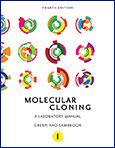
Photo from archive.org
The extracellular signal-regulated kinase (ERK) cascade comprised of the Raf, MEK, and ERK protein kinases constitutes a key effector cascade used by the Ras GTPases to relay signals regulating cell… Click to show full abstract
The extracellular signal-regulated kinase (ERK) cascade comprised of the Raf, MEK, and ERK protein kinases constitutes a key effector cascade used by the Ras GTPases to relay signals regulating cell growth, survival, proliferation, and differentiation. Of the ERK cascade components, the regulation of the Raf kinases is by far the most complex, involving changes in subcellular localization, protein and lipid interactions, as well as alterations in the Raf phosphorylation state. The Raf kinases interact directly with active, membrane-localized Ras, and this interaction is often the first step in the Raf activation process, which ultimately results in ERK activation and the downstream phosphorylation of cellular targets that will specify a particular biological response. Here, we will examine our current understanding of how Ras promotes Raf activation, focusing on the molecular mechanisms that contribute to the Raf activation/inactivation cycle.
Journal Title: Cold Spring Harbor perspectives in medicine
Year Published: 2019
Link to full text (if available)
Share on Social Media: Sign Up to like & get
recommendations!